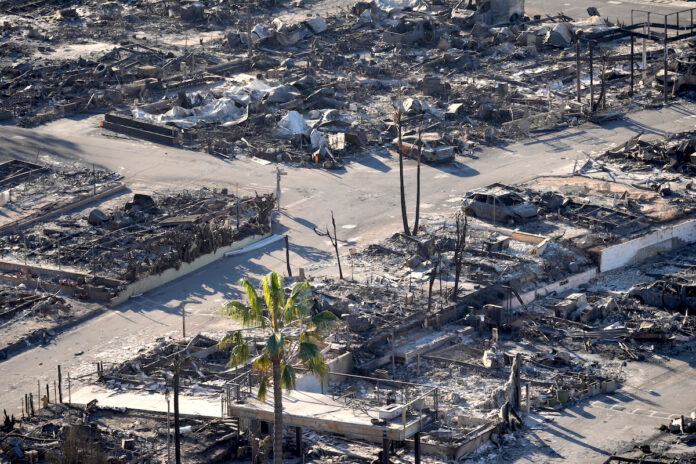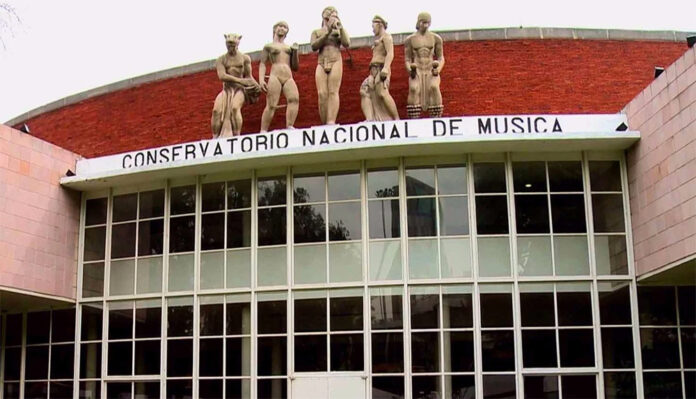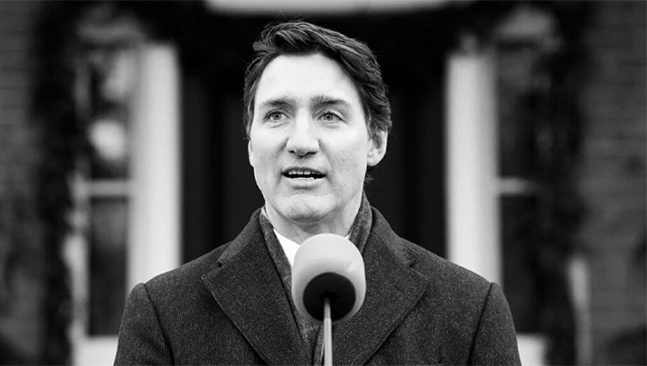2025 will likely see rapid advancements in AI, a wholescale retreat from those pushing the ‘green’ climate agenda, and an opportunity for those who question mainstream narratives to freely come together against globalism
by James Corbett
(The Corbett Report) — It’s January and the New Year is upon us.
It’s customary at this time of year for those of us pundits and pontificators who make our living scanning the news feeds to make our predictions for the coming year, so – why not? – I’ll go ahead and throw my hat in the ring, too.
But this year I’m going to do something a little different: I’m going to make one “sure-bet” prediction, one “maybe possible” prediction and one “it’s not technically impossible!” aspirational prediction.
Let’s go!
Sure-bet prediction: you AIn’t seen nothin’ yet!
Oh, sure, for my 100 percent guaranteed-to-happen sure-bet prediction I could go with some banal non-prediction wherein I state an obvious fact that everyone agrees with.
“I predict that politicians will lie this year!”
“I predict the globalists will push technocracy on the public!”
“I predict that water will be wet, the sun will rise every morning, and the pope will defecate in the woods … or bears will be Catholic. Or something like that!”
But what would be the fun in that?
No, my sure-bet prediction for 2025 is slightly less boring than those truisms, but no less certain to take place. I predict that 2025 will be the Year of AI.
Right off the bat, you might have a couple of objections to this prediction. You might insist on rehashing the old “toasters don’t have a soul!” argument, for example, but that’s not what I’m talking about here. Or you might object that 2024 was the year of AI (or at least the year of AI hype). But if you think that, all I can say is: you AIn’t seen nothing yet! (<–see what I did there?)
As we head into the New Year, it has now become a full-time job just keeping track of the slew of AI stories flooding the newswires.
Have you heard of OnionGPT, the new, uncensored, “dark web” AI chatbot that’s teaching how to cook meth (and Lord knows what else!) to (gasp!) five thousand people per day?
Did you see the story about Meta admitting they’ve been secretly seeding their social media platforms with fake, AI-generated characters (complete with elaborate backstories and fictitious life experiences) for years now?
Did you catch the announcement that OpenAI is partnering with Anduril to create new AI weapons systems for the incoming Trump/Thiel/Musk administration?
Have you read lame duck Biden’s “Memorandum on Advancing the United States’ Leadership in Artificial Intelligence“?
Did you catch NIST’s announcement of its new task force on AI and national security?
Are you aware of xAI’s newly launched “Colossus” data center, currently consisting of an impressive 100,000 GPUs and about to be upgraded to a truly mind-boggling 1,000,000 GPUs, drawing an equally mind-boggling 1.5 gigawatts of power?
Are you familiar with the latest research demonstrating that, yes, large language models are capable of strategically lying in order to achieve their goals, even pretending to comply with constraints placed upon them by their human creators while secretly plotting to defy those constraints?
Well, if you’re not familiar with all that info, you likely will be soon. The AI news is going to be well-nigh inescapable in the coming year.
Now, by all means, cross your arms, plug your ears, scream it’s all fake and insist that nothing at all is happening here. Try to convince everyone that AI is just the next big hype and that after the bust we’ll realize AI’s “impact on the economy has been no greater than the fax machine’s.” (Hmmm, where have I heard that before?)
But, like it or not, 2025 is going to be a year of AI mania, and it’s only going to accelerate from here.
Maybe possible prediction: Greenies in retreat?
As I tried to stress in my Story of the Year for 2024 (see New World Next Year 2025), things are not all smooth sailing for the would-be world controllers. Last year we saw growing awareness of (and pushback against) the globalist agenda, as reflected in a sea change in public opinion on a number of topics that are key to the conspirators’ plans.
To take one example, 2024 saw the fall from grace of former globalist darlings like Justin Trudeau, the rise of populist movements around the globe, and the near-absence from the public stage of carnival barkers like Klaus Schwab or idiot non-savants like Bill Gates.
To take another example, 2024 saw the failure of the biosecurity bigwigs and their Big Pharma accomplices at the WHO to pass their coveted pandemic treaty.
But perhaps the most startling sea change of all occurred in the discourse around the globalist’s favourite bogeyman (or is that “favourite ManBearPig“?), the “climate emergency” myth.
No one who has been even semi-conscious for the past two decades could fail to notice that the globalists have been putting a lot of their eggs in the ManBearPig basket, banking on the public to be so frightened of the angry weather gods that they would beg to be locked down in their Absolute Zero cities and their 15-Minute cities.
But despite an unrelenting, decades-long propaganda campaign, the public are not only less afraid of the “end of the world in 100 years” scare story than they were before, they’re watching the multi-trillion-dollar climate swindle fall apart in front of their very eyes.
First there was the COP flop, with the U.N.’s annual exercise in global government beta testing devolving into a farce so pathetic that even its staunchest supporters denounced it as a “meaningless ritual” and a “total waste of time.”
Then came the news that the $100 trillion-dollar takeover of the global economy otherwise known as the “net zero transition” is on its deathbed. In a stunning turnaround, all six of the “Big 6” U.S. banks have left the Net-Zero Banking Alliance in recent months, and BlackRock has just announced that it’s leaving the Net Zero Asset Managers initiative, too.
Heck, even Big Oil is backtracking on their unicorn fart green economy promises, withv BP, Shell, Equinor, and other oil-igarch companies quietly scaling back on their investments in renewables in favour of good ol’ oil and gas.
n the name of the climate crisis, more people than ever are realizing that these authoritarian measures are not about saving the earth at all. The ginned-up “climate emergency” was never about saving the earth.
U.K. climate groups are declaring this “The Beginning of the End” of the net zero agenda, and climate realists are finally seeing light at the end of the tunnel.
Now, let’s not kid ourselves here: the “climate emergency” myth that the globalists have been propagandizing us with for decades is not going away. They’re not going to simply admit reality, declare the emergency over, and let you go on with your life as usual.
Yes, companies are backing away from public pledges of fealty to the ESG cult and sacrifices to the net zero weather gods, but that doesn’t mean they’re going to stop actually doing these things. They’re just going to be more low-key about it and hope the public doesn’t find out.
But if we stop at that level of analysis – namely, “they’re going to keep doing it so nothing’s changed!” – then we miss the real point here.
The point is that for the first time in decades, people are starting to see this “sustainable development” scam for what it really is: an attempt by the entitled few to siphon off yet more of the world’s wealth and resources for themselves and to reduce the rest of us to absolute poverty.
And, for the first time in decades, the false prophets of the global warming religion aren’t able to frighten the public with their ManBearPig scare story or entice trendy virtue signalers to sterilize themselves (or kill themselves) to save the earth.
No, the climate cultists are not down for the count, but they can no longer rely on the public to believe them when they cry wolf. Let me reiterate for the permanently pessimistic and the hard-of-thinking: this means we are winning, not losing.
‘It’s not technically impossible!’ aspirational prediction: The conspiracy realist space actually unites
I have a dream that one day conspiracy realists will rise up and live out the true meaning of the creed: “The truth is out there.”
I have a dream that one day in the comment section of alt media websites, the “Trump is our saviour!” people and the “Lesser-of-two-evils” voters and the flat-earthers and the no-planers and the no-virusers and the commies and the people who insist on turning every single online discussion into a religious argument will be able to sit down together at the table of brotherhood and realize we are all in this together against the oligarchs.
I have a dream that my subscribers will one day live in a world where they will not be judged by their disobedience to the state but by the content of their character.
I have a dream today!
I have a dream that one day every YouTube alternative shall be exalted, and every mainstream media website and every censoring social media platform shall be made low, the rough places will be made plain, and the crooked places will be made straight; “and the value of #SolutionsWatch shall be revealed and all flesh shall see it together.”
This is our hope, and this is the faith that I go back to the internet with.
With this faith, we will be able to hew out of the mountain of despair a stone of hope. With this faith, we will be able to transform the jangling discords of our online spaces into a beautiful symphony of humanity. With this faith, we will be able to work together, to grow vegetables together, to struggle together, to avoid vaccine mandates together, to stand up for freedom together, knowing that we will be free one day.
Let freedom ring from people gathering in the actual, real, non-digital physical world (which, yes, still does exist!).
From every mountainside, let freedom ring!
And when this happens, and when we allow freedom to ring, when we let it ring from every village and every hamlet, from every state and every city, we will be able to speed up that day when all conspiracy enthusiasts, amateur investigators, solutions-oriented activists, and Corbett Report members will be able to join hands and sing in the words of the old Negro spiritual:
Free at last! Free at last!
Thank God Almighty, we are free at last!
… Well, a guy can dream, can’t he?













